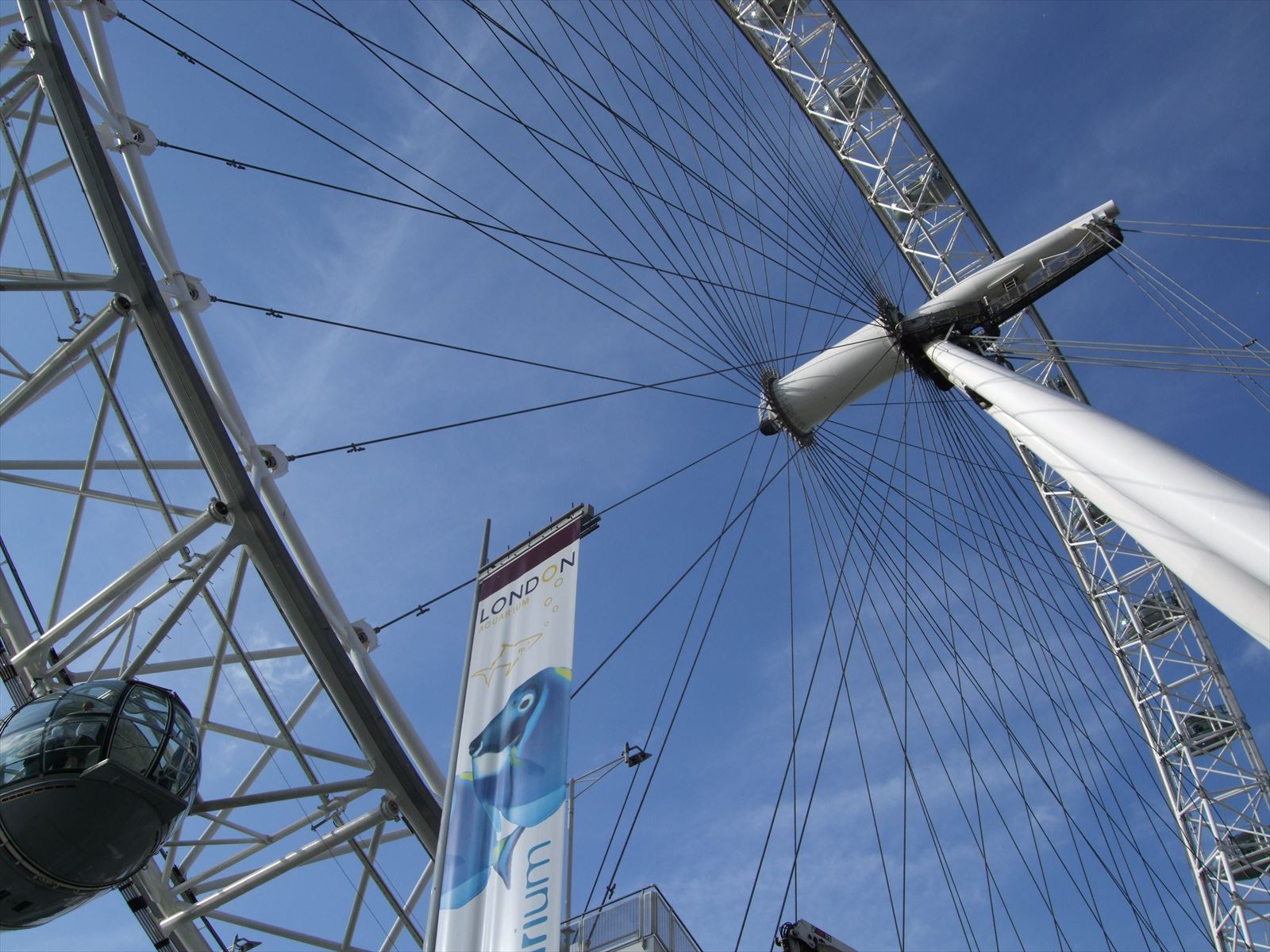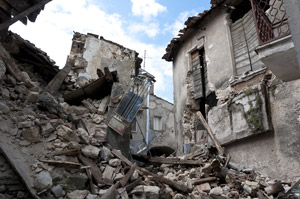キャプティブ 2020.03.01
CA 8 世界レベルの保険を「産直」”Directly delivery” of the world class insurance
目次
- 1.欧米の地震保険の状況
- 2.欧米で提供されている「世界水準の企業用地震保険」の概要
- 3.欧米の企業用地震保険の「産地直送」
- 今回のまとめ
- 1. The State of Earthquake Insurance in Europe and the United States
- 2. Overview of world class earthquake insurance for businesses in Europe and the United States
- 3. Corporate earthquake insurance in Europe and the US
- Summary of this issue
Copyright © Shinichiro Hatani 2020 All rights reserved
For those who prefer to read this column in English, the Japanese text is followed by a British English translation, so please scroll down to the bottom of the Japanese text.
日本の地震保険制度は「居住用建物」と「その建物内に収容されている動産」等、財物に損害が発生した場合、その損害額を補償するものであり、企業向け地震保険(企業用火災保険に地震危険補償特約を付帯したもの)においても同様、「財物損壊」を補償するものである。
建物等が損害を受けることによって、地震以前と同等に事業を継続することが困難になった場合、事業収益の低下をきたすが、この「事業中断(=収益の低下)」を補償する補償も提供されることもあるが、ごく限定的であり一般的ではない。
その理由としては、①「収益低下への補償は、損害保険会社の特約再保険では、一般的には対象外になっているため、再保険会社と一から個別に交渉しなければならず、補償枠を得られる可能性も高くない」ため、また②そもそも、「限りある地震保険の引受けキャパシティ(引受枠)をより多くの顧客に販売するため」である。
しかし、欧米で提供されている、世界レベルの地震保険は、一般的に「財物損壊」の補償と「事業中断(=収益の低下)」への補償を併せ持ったものであり、日本では一般的には得られない補償内容である。

1.欧米の地震保険の状況
近代的損害保険発祥の地とされ、いまだに世界の損害保険の中心地である英国ロンドン、また世界最大級の再保険会社が存在するドイツそしてスイス。イタリアを除くヨーロッパ全域は、固いプレートの上にある国々であるため、地震はほとんど発生しない地域である。特に、ドイツは、地震が非常に少ない国として知られており、人生の中で地震を1度も経験したことがないという人も多い、ヨーロッパの内陸国スイスも地震が非常に少ない国であり、スイスではマグニチュード6以上の地震が過去800年間に5回程度しか起きておらず、身体に感じる有感地震自体も非常に少ない地域である。
また、米国でも、地震が多い地域として知られているカリフォルニアを除いて、ほとんどの地域で地震の発生は非常に少ない。こういう状況のため、「企業向け地震保険」は、自国内の企業向けというより、海外の損害保険会社に対して再保険の補償(引受枠)として提供されることが一般的である。
2.欧米で提供されている「世界水準の企業用地震保険」の概要
大きな地震が発生して、工場、事務所が損害を受けた場合、事業の継続が困難になる可能性は高い。まして、その損害が津波に拠るものであれば、「地震の揺れによる損害」の比でないことは容易に想像できる。津波は、何も沿岸部だけに被害を及ぼすものではなく、平野であれば、平野部全体、奥地まで津波の水が浸入することが想定される。大阪、名古屋の地域では、南海トラフ地震が起きた場合の想定として、新大阪駅、名古屋駅までが浸水する可能性があるとされている。その場合、大阪、名古屋の多くの地域では、工場等が浸水被害に遭い、建屋内機械類が稼働しなくなる可能性がある。
また、たとえ自社の工場等が浸水しない場合であっても、インフラ(社会基盤、生産基盤)である道路の冠水等により、長期間、原材料、製品類等の運搬に困難をきたすことが予想される。「容易に津波の被害を受けやすい、日本の産業基盤の脆弱性を象徴するリスク」と言える。
上記の発生予見事象を考えながら地震保険の補償内容を具に検討していくと、「物的損害に対する補償」だけでは、地震によって惹き起こされるリスクのごく一部しか補償されていないことが容易に認識できる。前述の操業不能の状態や事業の継続に困難をきたす場合への保険への対応、補償が必要となっていくことが分る。
このため、「①「物的損害」、英語ではProperty Damage(プロパティ・ダメージ:PD)」だけではなく、「②事業が中断して収益が低下する「事業中断」、英語ではBusiness Interruption(ビジネス・インタラプション:BI)」、これらを合わせて補償する地震保険が一般的であり、「物的損害」のみの補償が一般的である日本の企業用地震保険とは、大きく事情が異なっている。

3.欧米の企業用地震保険の「産地直送」
このように、欧米で提供されている地震保険の補償内容は、日本の損害保険会社から通常提供されているものより遥かに広範な内容である。理由は、「提供する対象(地震保険を必要とする顧客数)が少ない」ため、「広範な補償の提供が可能となっている」と考えられる。
一方、日本の損害保険会社は、「その社会的使命として、ある特定の一社にのみ補償を提供することではなく、日本国内の個人、企業に遍く広く補償を提供すること」が求められているため、「広範な補償の提供=地震保険のキャパシティ(引受力)の枯渇」に繋がることを懸念して、「広範な補償の提供」には躊躇する傾向が強い。
その「不足している地震保険の補償枠を確保する」ことが「キャプティブ設立」の目的となっているケースが多い、それほど日本で得られる企業向け地震保険の補償枠は限られているからである。
「キャプティブ=保険会社」として、海外の再保険市場にアクセスして、海外から必要な補償を確保、国内の保険会社(元受保険会社)にその補償を提示することができれば、元受保険会社の保険引受力(キャパシティ)を補うことができるため、元受保険会社からは、「十分な補償範囲」と「十分な補償枠」、それぞれの提供を受け、元受保険の引受が可能となる。
その元受保険会社からキャプティブへ再保険を出再(再保険を出すこと)、そして引受けた再保険会社であるキャプティブが、さらにリスクヘッジのために、ロンドン保険市場、世界最大級の再保険会社へ再々保険を出再することによって適切なリスクマネジメントができるのである。
「保険」という言葉は、明治時代、福沢諭吉が「Insurance」の訳語として案出したものであり、日本でこれまで販売されてきた様々な損害保険は、ほとんどすべて海外、特にその本場である、英国ロイズ(Lloyd’s of London)を中心にしたロンドン保険・再保険市場で開発されたものが大半である。
その損害保険の本場、「損害保険が生まれて育つ場所」から「産地直送」によって世界最先端の損害保険の補償を適格に、また的確に、日本で受け取る手段、方法が「キャプティブ」なのである。
今回のまとめ
損害保険は、「ほとんどすべて」と言っていいほど、海外、特に保険の本場、英国ロンドンのロイズ(Lloyd’s of London)を中心にしたロンドン保険・再保険市場、シティの一角で生まれてきた。その新たな仕組みも、商品も。その世界最先端の損害保険を、「自社のリスクマネジメントを有効に機能させる為に日本に導入する手段がキャプティブ」である。
グローバル・リンクのミッションは、商品に「ソリューション・キャプティブ®」との名称を付けているように、「顧客へ、顧客の企業戦略へのソリューションの提供」である。
「地震保険が必要であるが、日本の保険の引受条件等に満足がいかない」、「どうしてこういう保険料なのか疑問である」等、様々な損害保険に関する疑問や課題があれば、是非グローバル・リンクにご連絡をいただきたい。
ソリューションを一緒に検討させていただくことにより、Turning Risk to Profit®(リスクの収益化)を策定できると考えているからである。
執筆・翻訳者:羽谷 信一郎
English Translation
Captive 8 – “Directly delivery of the world class insurance”
Japan’s earthquake insurance system compensates for damage to property such as “residential buildings” and “movable property housed in the buildings” in the event of damage.And, corporate earthquake insurance (commercial fire insurance with a special clause for earthquake risk coverage) also provides “property damage” coverage as well.
If it becomes difficult to continue the same level of business operations as before the earthquake due to damage to buildings and other structures, business profits will decrease. Compensation for this “business interruption” (i.e., loss of revenue) may also be offered, but it is very limited and not common.
The reasons for this are; (1) because coverage for declining earnings is generally not covered by property and casualty reinsurance companies’ treaty reinsurance, they have to negotiate individually from the ground up with the reinsurance company, and they’re not likely to get capacity (a line of coverage), and (2) because they have an intention of it that “limited earthquake insurance underwriting capacity (underwriting limit) is sold to a larger number of customers”.
However, world-class earthquake insurance, which is commonly offered in Europe and the United States, combines coverage for “property damage” with “business interruption (i.e., loss of earnings)”, which is generally not available in Japan.
1. The State of Earthquake Insurance in Europe and the United States
London, England, the birthplace of modern non-life insurance and still the world’s leading center for non-life insurance, and Germany and Switzerland, home to some of the world’s largest reinsurance companies. With the exception of Italy, all of Europe is a region where earthquakes are almost non-existent, as the countries sit on solid plates. Germany, in particular, is known as a country with very few earthquakes, and many people have never experienced an earthquake in their lives. It is also a region with very few sensory earthquakes itself.
In addition, most areas of the United States also have very few earthquakes, with the exception of California, which is known to be an earthquake-prone region. Because of this, earthquake insurance for businesses is generally provided to foreign property and casualty insurance companies as reinsurance coverage (underwriting limit) rather than to companies in the home country.
2. Overview of world class earthquake insurance for businesses in Europe and the United States
If a major earthquake damaged a factory or office, it is highly likely that it would be difficult to continue business. And if the damage is caused by a tsunami, it is easy to imagine that there is no comparison to the damage caused by an earthquake. A tsunami does not only affect the coastal areas, but also the entire plains, and even the interior of the plains could be penetrated by tsunami water. In the Osaka and Nagoya areas, as far as Shin-Osaka and Nagoya stations are assumed to be flooded in the event of a Nankai Trough earthquake. If this happens, factories and other facilities in many parts of Osaka and Nagoya could be flooded and machinery in the buildings could stop operating.
Even if the company’s factories and other facilities are not flooded, the roads that form the infrastructure (social and production infrastructure) could be flooded, making it difficult to transport raw materials and products for a long time. This risk symbolizes the vulnerability of Japan’s industrial infrastructure, which is easily vulnerable to tsunamis.
When examining the contents of earthquake insurance coverage in light of the foreseeable events described above, it is easy to see that “physical damage coverage” alone covers only a small portion of the risks caused by an earthquake. It is clear that insurance coverage for the aforementioned disruption of operations and difficulty in continuing business will be necessary.
For this reason, earthquake insurance in Europe and the United States is generally cover not only (1) “Property Damage,” but (2) “Business Interruption,” which is the interruption of a business and a decrease in revenue, together, which is very different from Japanese commercial (business) earthquake insurance, which generally covers only “property damage”.
3. Corporate earthquake insurance in Europe and the US
Thus, earthquake insurance in Europe and the United States is far more extensive than what is usually offered by Japanese non-life insurance companies. The reason for this is thought to be that “the number of customers requiring earthquake insurance” is small, and therefore “the breadth of coverage available”.
On the other hand, Japanese non-life insurance companies are hesitant to “provide a wide range of coverage” as they are concerned that “providing a wide range of coverage = depletion of earthquake insurance capacity” as their social mission requires them to “provide coverage to all individuals and companies in Japan, not just to one particular company”.
In many cases, the purpose of establishing a captive is to “secure insufficient earthquake insurance coverage” because the amount of corporate earthquake insurance coverage available in Japan is so limited.
As a “captive = insurance company”, it can access overseas reinsurance markets to secure necessary coverage from overseas and offer it to domestic insurance companies (primary insurers) to supplement the underwriting capacity of primary insurers.
The primary insurer then cedes reinsurance to a captive, which in turn cedes reinsurance to one of the world’s largest reinsurers in the London insurance market for further risk hedging, thereby enabling appropriate risk management.
The word ” hoken” in Japanese was invented by Yukichi Fukuzawa in the Meiji era (1868-1912) as a translation of the word “insurance”,and almost all of the various non-life insurance policies sold in Japan have been developed overseas, particularly in the London insurance and reinsurance market centered on Lloyd’s of London, “the home of insurance”.
Captives are the means and method of receiving the world’s most advanced P&C insurance coverage in Japan, delivered directly from the “birthplace of P&C insurance”, in a qualified and accurate manner.
Summary of this issue
Property and casualty insurance has been born “almost entirely” overseas, especially at the home of insurance, “Lloyd’s of London” in the London insurance and reinsurance market, a part of the City of London, UK. Both its new structure and its products. The captive is a way to introduce the world’s most advanced non-life insurance products to Japan in order to make the company’s risk management function effectively.
Global Link’s mission, as it calls its products “Solution Captive®,” is to “provide solutions to customers and their corporate strategies.”
If you are in need of earthquake insurance but are not satisfied with the underwriting conditions of Japanese insurance, or if you have any doubts about the price of earthquake insurance, Global Link is here to help.
We will be happy to discuss solutions with you so that you can formulate a Turning Risk to Profit® plan.
Author/translator: Shinichiro Hatani

